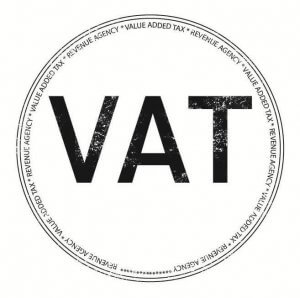So, you’ve decided to start selling internationally. Wonderful! You’ve gone through the VAT registration process for a European country; now it’s time to start thinking about filing the VAT return. Don’t worry! We are here to help make that experience as painless as possible!
Even if you saved yourself the trouble and hired somebody to take over the process, it’s still a good idea to have an overview of how a VAT return is done. To start with, a VAT return shows you how much VAT is due on Sales, and how much VAT can be reclaimed on Purchases; hence, how much is paid or reclaimed for any given period. If you’re not buying much within the European country in question, you probably won’t have much (if any) VAT to reclaim.
The output VAT (the VAT due on your sales), is actually where a little bit of math is handy. A good place to go to when starting a returns calculation is your seller account. In the Order Reports section (Seller Central > all statements > Transaction view), you’ll find the information that can be parsed into a VAT return.
Now, keep in mind that this is a rough calculation. There are other rules that you may overlook at a first glance, such as blanket rules; for example, books of a pornographic nature are specifically removed from the VAT exemption applicable to books in some countries. But the process above will at least get you started.
After everything has been split into product type, the formula you can use to outline the VAT charged at the time of the transaction is the following: Gross x VAT / (100+VAT), where Gross is price plus shipping and VAT is value added tax rate.
The fees that Amazon charges for each transaction should be treated separately. These fall under the reverse charge process. Given that transactions between companies registered for VAT inside Europe are not subject to VAT, this type of operation should be declared in your VAT return document both as input VAT and output VAT (Amazon will not charge you VAT for the transactions they host, since you are VAT registered, but it will be your responsibility to declare this amount in your VAT return).
Here is a simplified example of what your VAT return could look like:
Say your transactions for June include:
- One pair of shoes sold for 50 gbp (price + shipping)
- One book sold for 10 gbp (price + shipping)
- Your Amazon monthly subscription fee of 25 gbp
In this case your VAT return should look like this:
Output VAT:
- for the shoes you charged a 20% VAT rate, meaning 50 / (100+20)* 20 = 8.33gbp (this is the formula to calculate the VAT from a price that is VAT inclusive)
- for the book you charged a 0% VAT
- VAT on services is charged based on the location of the customer (so presuming you are VAT registered in the UK, you will be subject to a 20% rate), meaning 25*20% = 5gbp (the formula for this is different, since the monthly subscription fee is not VAT inclusive)
Input VAT:
Same as above: VAT on services is charged based on the location of the customer (so presuming you are VAT registered in the UK, you will be subject to a 20% rate), meaning 25*20% = 5 GBP (the formula for this is different, since the monthly subscription fee is not VAT inclusive)
Final VAT return is Input VAT – Output VAT, meaning 5- (8.33+0+5) = -8.33
Consequently, you will have to pay 8.33 VAT to the local authorities.
If the result of this equation is positive, that means you are entitled to a refund! Hooray!
With a little bit of practice, this process becomes a lot easier. If you have hired an expert to help guide you through the process then that’s even better. We always recommend Meridian whenever you want to skip the potential headache.
